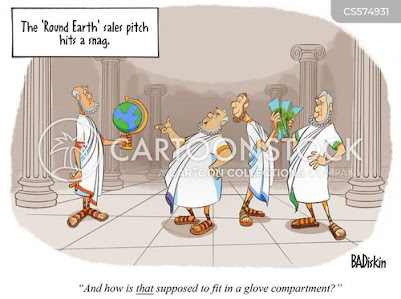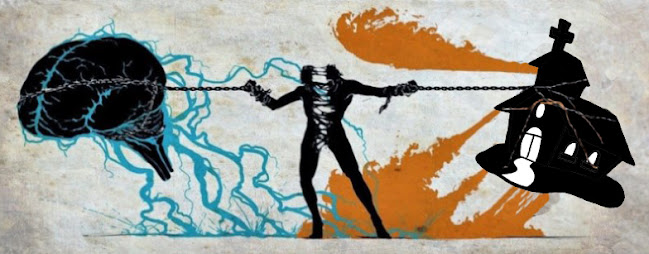Can We Handle Challenges to Our Beliefs?
January 5, 2025
Embedded deeply in the Jewish religion is the belief that the Jews are the chosen people of God, and (at an earlier time) even that Yahweh is ‘their’ God. And so the Christian Epiphany (today’s Feast that celebrates the visit of non-Jews, the MAGI) gives us the insight that God is the Father of ALL. In fact, all the readings of today give us the message that Jesus’ teachings, and the salvation he brought, was not just the for Jews, and, moreover, that the Gentiles did NOT have to come through the Jews to gain salvation. In fact Peter and some of the other Apostles initially believed that the Gentiles too had to follow Jewish rituals like circumcision (Galatians Ch. 2), food restrictions (Acts 10:9-14), etc if they wanted to be true followers of Jesus. So these Christian teachings were earth-shaking teachings for the Jews. Similarly Jesus’ message that love of God is essentially best practised by offering love and justice to our neighbour, and not by sacrifices and offerings (Hebrews 10:5ff), the latter being the staple of most religious traditions (including the way Catholicism is practised today), was also a paradigm-changing teaching.
To get a sense of how unsettling these changes must have meant for the Jews, think of how unsettling it was for human beings to suddenly be told in the 15th and 16th centuries, that the earth was not flat, but actually round like a ball, and the sun which they saw moving every day from east to west was actually stationary and it was this round earth that revolved around it. Everything they took for granted suddenly made no sense. If it was a ball then what was up and what was down, what did it mean to say Jesus ascended into Heaven, or that Hell was down below, and why were human beings not flying off the earth, and how could their very eyes be deceiving them when it was clear that they saw the sun moving across the sky every day, and so on ad infinitum. It was so unsettling that the Church initially even condemned such teachings as heresies, as we know from the famous story of Galileo being threatened that he would be burnt if he did not recant his teaching about the earth revolving around the sun.
These kinds of paradigm-shifting experiences are becoming more and more part of our lives today. Thus in the world of religion, we have a paradigm shift in the Catholic Church where the validity of the value and pathway of other religions is acknowledged. Morals and ethics are suddenly being challenged, as for example by the LGBTQ world, which force us to ask ourselves whether there is any ‘natural’ law when it comes to sexuality and gender. In the world of science, quantum physics has turned everything upside down, and suddenly we are being told that matter can actually exist in two states at once, and that the laws of physics that we have been taught for years, do not apply in the sub-atomic world.
As a result, much of what we held on to, and helped us navigate our lives, suddenly seem to be built on shaky ground. When we are faced with such paradigmatic changes that demand that we completely overhaul our long held beliefs, most of us feel terribly insecure and then double down even more strongly on our earlier held beliefs. This is the essential difference between conservatives and liberals. But let us also remember that none of us is fully liberal or fully conservative, for there are always areas in our lives where we are not willing to concede our long held beliefs to any ‘new-fangled theories’, even as there are other areas where we are willing to explore and change.
This struggle between the conservative and liberal elements within each of us, is the eternal struggle of human beings - and despite what we may like to believe, human beings have faced this challenge multiple times over our human history, though one may acknowledge that the rate at which such paradigmatic changes are taking place in the current and past century, has increased significantly. How do we remain open to all these unsettling changes? How do we decide what beliefs or understandings to hold on to, and what to discard?
Perhaps the Japanese way of constructing earthquake resistant buildings could give us an insight into how to navigate our way. There are a number of different methods used in Japan, including especially creating a mesh like grid at various stages in the building including in the foundation, so that when any one column is affected it is stabilized by the mesh which is attached to other columns that are not so affected. This might give us an insight into how we too could negotiate earthquake-type paradigm shifts in our own lives and belief systems - namely that if we are meshed in a ‘community’, rather than depending on our own individual strength, we can handle such challenges to our long-held beliefs more safely. A mesh-like situation is always stronger. This is the reason why we need to be connected to others, becoming part of a ‘reflecting’ community. Those who isolate themselves, and choose to depend purely on their own individual intellectual or religious strengths, are putting themselves in ‘danger’. We need to be able to have a community in which we we can share our thoughts, solutions and doubts, always being open to take help or learn from others. A person who is convinced that only s/he has the true answers, or can find out truth for him/herself alone, will find it extremely difficult, even impossible perhaps, to navigate through such paradigm shifts. This is why Pope John XXIII's desire to open the windows of the Church and let the Spirit blow through was such an earth-shaking act, for the Church too tended, after the first four or five centuries, to generally keep itself isolated, believing that all truth was found within it. Ideally, this reflecting community, should be a heterogeneous community, as too often the community we may reflect with, only consists of people who have the same belief system as us. As a result there is a great limitation to our reflections, as in a homogeneous community we often do not find radical challenges to our own belief systems.
Coming back to another Japanese architectural technique, there is the technique of creating rubber or liquid filled bases below the columns, or in structures between floors, so that these absorb the energy of the earthquakes and keep the building safe from collapsing. When facing such paradigm shifts, we too need such shock absorbers, and for human beings these absorbers are always present if we have a relationship of love with one or more others. For if a threat to our existing belief system comes from a place of love, we do not feel so broken and we are able to absorb the shocks better.
I would also suggest that both these ‘methods’ are reflected in Jesus’ teachings too - and I would say even in the teachings of a number of other religious geniuses. Jesus’ parable of the Good Samaritan reminds us that we are intricately connected to every other human being, for every one is my neighbour. And his parable on the Last Judgement tells us that our only way of entering the kingdom of heaven is through loving others
But in the absence of this strength of a reflective heterogeneous community and the cushioning of love, every paradigm shift is a threat that takes us further and further away from each other - increasing hate and polarizing our world even more. As a result, instead of building a mesh to hold us all safely together, we go back to building individual silos; and instead of fostering a flexible rubber or liquid base, we set our beliefs in stone. The ‘other’ then - whether people or ideas - becomes the enemy. And we forget the African teaching of UBUNTU - I only AM, because We ARE.
First Reading: Isaiah 60: 1-6
Arise, shine, for your light has come, and the glory of the Lord rises upon you. See, darkness covers the earth, and thick darkness is over the peoples, but the Lord rises upon you, and his glory appears over you. Nations will come to your light, and kings to the brightness of your dawn. “Lift up your eyes and look about you: All assemble and come to you; your sons come from afar, and your daughters are carried on the hip. Then you will look and be radiant, your heart will throb and swell with joy; the wealth on the seas will be brought to you, to you the riches of the nations will come. Herds of camels will cover your land, young camels of Midian and Ephah. And all from Sheba will come, bearing gold and incense and proclaiming the praise of the Lord.
Second Reading: Ephesians 3: 2-3a, 5-6
Surely you have heard about the administration of God’s grace that was given to me for you, that is, the mystery made known to me by revelation, as I have already written briefly. In reading this, then, you will be able to understand my insight into the mystery of Christ, which was not made known to people in other generations as it has now been revealed by the Spirit to God’s holy apostles and prophets. This mystery is that through the gospel the Gentiles are heirs together with Israel, members together of one body, and sharers together in the promise in Christ Jesus.
Gospel: Matthew 2: 1-12
After Jesus was born in Bethlehem in Judea, during the time of King Herod, Magi from the east came to Jerusalem and asked, “Where is the one who has been born king of the Jews? We saw his star when it rose and have come to worship him.” When King Herod heard this he was disturbed, and all Jerusalem with him. When he had called together all the people’s chief priests and teachers of the law, he asked them where the Messiah was to be born. “In Bethlehem in Judea,” they replied, “for this is what the prophet has written: “‘But you, Bethlehem, in the land of Judah, are by no means least among the rulers of Judah; for out of you will come a ruler who will shepherd my people Israel.” Then Herod called the Magi secretly and found out from them the exact time the star had appeared. He sent them to Bethlehem and said, “Go and search carefully for the child. As soon as you find him, report to me, so that I too may go and worship him.”
After they had heard the king, they went on their way, and the star they had seen when it rose went ahead of them until it stopped over the place where the child was. When they saw the star, they were overjoyed. On coming to the house, they saw the child with his mother Mary, and they bowed down and worshiped him. Then they opened their treasures and presented him with gifts of gold, frankincense and myrrh. And having been warned in a dream not to go back to Herod, they returned to their country by another route.



Comments
Post a Comment